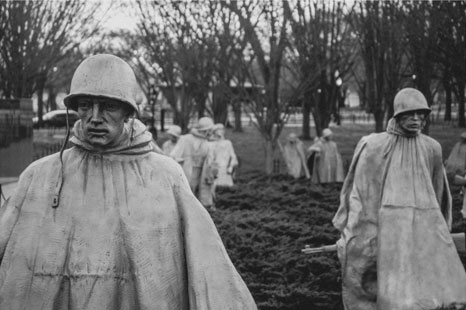The History of War Music in the U.S.
By Warren Anderson
I
In a troubled year, on August 26 millions will honor the 100th anniversary of the 19th Amendment which will give cause for celebration and reflection.
Although a young country, the United States has a history rife with conflict and bloodshed. The American people always have fought for their rights, no matter how hard that struggle proved. Through it all, music has been an essential part of military movements and wars.
Whether to call militias or to signal strategy changes, music has helped to shape the American military.

Why Music During the War?
Many people wouldn't connect the dots between music and war. However, the drummer boy and his musical battalion have been essential to military activities since the beginning of U.S. history. The role of music during war times has two distinctions.
First, the music worked to inspire the troops, keep them motivated, and lighten the mood. War is always challenging, and many soldiers struggle with feelings of sadness, depression, and anxiety. The musical accompaniment worked to make them feel more comfortable going out onto the battlefield.
Second, battle music worked to intimidate the opposing troops. The war chants and symphonies created loud, proud, and boisterous troops. Because of the loud instruments and intense sounds, battle music worked to inspire fear in enemy soldiers. They didn’t know who they were going up against when facing the U.S. army.
With a bit of context in mind, let's dive into specific conflicts where and when music was essential in the history of U.S. military activities.
The American Revolution
During the Revolution, music played an integral part. The music battalions during colonial and revolutionary eras drew inspiration from the English military. The drummers were responsible for signaling when farmers needed to come up from rural arms to fight. The regalia of musicians were responsible for signaling schedule changes in the soldiers during the war.
Once the Revolution was in full swing, drummers and fifers helped with commanding troops to shoot. The technology of the age made hand-signaled commands nearly impossible to decipher, making music essential for battlefield communications.
The War of 1812
The War of 1812 brought about the first war-related use of the bugle by American troops. The brass instrument had conical bore tubing, wound once around, and full bells. Calvary units used the instrument during the conflict because it was easier to handle than a drum.
During the War of 1812, bugles rose in popularity and began to replace drums on the field. Drummers adapted many of the calls, or "taps," originally performed by drummer boys, to play on the bugle.
The Civil War
The Civil War utilized instruments on both sides for much the same purpose as in previous conflicts. However, the critical difference is that the age of the musicians changed. During the conflict, many of the soldiers on both the Union and Confederate sides were teenagers.
The youngest boys became drummer boys, marching with battalions and signaling strategy and schedule changes. These young musicians also had dual roles in picking up injured soldiers from the battlefield. In many cases, the drummer boys started in musical and support roles and enlisted as proper soldiers when they came of age.
Modern-Day Usages of Music in U.S. Conflicts
Though music had a more traditional role in earlier conflicts, it still contributes to the U.S. military's conflict efforts today. Soldiers played the radio while abroad during WW2, both to entertain themselves and to intimidate the enemy with American music. Without music, the United States would have an entirely different military history.
Are you looking to invest in a piece of history for yourself? You can buy used cymbals and other instruments to participate in a tradition of music that has helped boost morale in various American military engagements for centuries.
 >
>